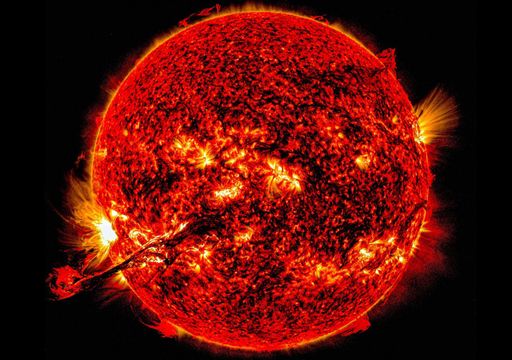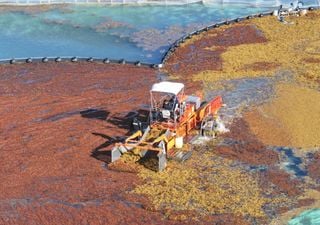The jet stream pattern that is driving more frequent extreme winter cold and periods of rain
Although the Earth is warming, a new study suggests that the atmosphere could cause long periods of extreme cold or rain in winter in some regions. Find out more here!

The authors of this study claim to have identified giant meanders in the global jet-stream that bring polar air south, creating simultaneously cold or wet conditions across much of North America and Europe, often for weeks.
These meteorological events, the authors claim, have doubled in frequency since the 1960s. In recent years alone, they have killed hundreds of people and paralysed energy and transportation systems.
What is the jet stream?
The jet stream is a fast-moving river of air that continually circles the Northern Hemisphere from east to west. It generally flows within relatively straight boundaries, separating cold polar air masses from mid-latitudes, but can sometimes naturally develop large oscillations.
Some scientists think these oscillations are increasing in size and frequency due to rapid warming in the Arctic, which is greatly disproportionate to more southern regions. This destabilises the system, generating winds that break the north-south barrier, they say.
Given the right conditions, some of these oscillations can be amplified into symmetrical waves that then settle across the globe, somewhat similar to the vibrations that produce a constant musical tone. These are called Rossby waves.

In a 2019 study, Kornhuber and colleagues showed that a repeating Rossby wave pattern known as wave-7 — that is, seven giant peaks and seven corresponding troughs stretching across the globe — drags hot, dry air from the subtropics to mid-latitudes, causing simultaneous summer heatwaves and droughts in predictable parts of North America, Europe, and Asia. These phenomena can cause simultaneous and widespread crop losses in important regions of the food market, according to the study.
The latest article more or less shows the other side of the coin. A winter pattern known as wave 4 - globally, four peaks and four corresponding troughs - tends to set in. The authors state that when this happens, the chances of extreme cold or humidity in the troughs triple. At the same time, abnormally hot or dry conditions may develop on the peaks.
Wave 4 and its consequences across the globe
The most recent iteration of wave 4 brought a February 2021 cold snap to much of Canada, the United States and even northern Mexico. Temperatures fell up to 10°C below average as far south as the US Gulf Coast. Parts of the Deep South saw rare snowfall. Texas was the hardest hit, where record cold paralysed natural gas pipelines and other energy infrastructure, causing much of the power grid to be shut down and homes and businesses to freeze.
In total, at least 278 people died directly or indirectly due to the cold wave and the damage amounted to around 200 billion dollars. A similar, although less destructive, event triggered a January-February 2019 cold snap in the eastern United States, killing more than 20 people.
The same pattern often reaches the other side of the Atlantic at the same time, generally being more extreme in south-western Europe and Scandinavia. The January-February 2019 event brought extremely low temperatures to southern France and Sweden. At the same time, by sweeping in moist air from the Atlantic, it caused extreme rainfall and flooding in many areas of Central and Eastern Europe. Similar events took place in Europe in 2013 and 2018.
Kornhuber says the exact mechanisms that trigger the wave 4 pattern require further investigation, but suspects they begin with periodic changes in ocean conditions in parts of the Pacific that, under the right circumstances, could trigger a global chain reaction.
Determining this mechanism could allow scientists to better predict cold snaps or humidity, he said. Kornuber also emphasises that there is increasing evidence of a link between climate warming and the summer meanderings that cause heat waves. However, winter waves continue to be the subject of intense scientific debate.








